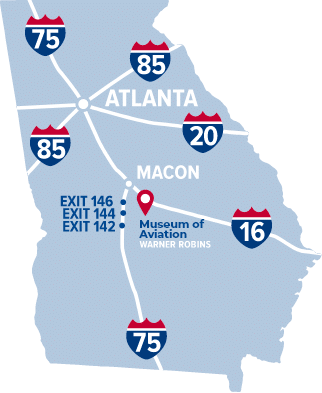The B-1B is the improved variant of the B-1A, which was cancelled in 1977. The program was resurrected in 1981 with the first production model flying in 1984. The B-1B was delivered to the Air Force in 1985.
The B-1B’s blended wing/body configuration, variable-geometry design, and turbofan engines continue to provide great range and high speed, more than 900 mph at sea level. Forward wing settings are used for takeoff, landings, and high-altitude maximum cruise. Swept wing settings are used in high subsonic and supersonic flight and also enhance the B-1B’s maneuverability.
The B-1B employs forward-looking radar and terrain-following radar. Its extremely accurate Global Positioning System/Inertial Navigation System, Doppler radar, and radar altimeter enable aircrews to navigate around the world without ground-based navigation aids.
The Museum’s B-1B, serial number 83-0069, was flown to Robins AFB in 2002 and is marked as 86-0098, a B-1B that was assigned to the Georgia Air National Guard’s 116th Bombardment Wing, which flew them from Robins from 1996-2002.











